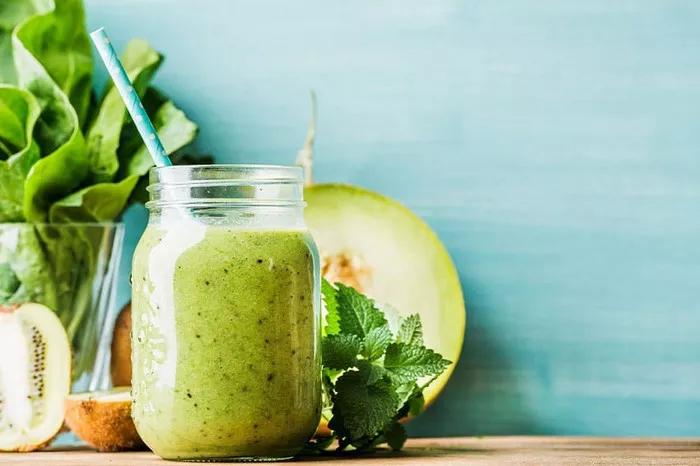Going without food for a while—whether due to illness, fasting, or simply skipping meals—can leave your body in a state of imbalance. When you finally get hungry and are ready to eat again, it’s important to approach it carefully. The food you choose and the way you reintroduce meals can significantly affect how your body responds. Eating the wrong foods too quickly can cause discomfort, bloating, or even digestive distress. This guide will help you understand what to eat after a period of not eating, how to ease back into eating, and how to make sure your body gets the nutrients it needs for optimal recovery.
Why You Should Be Careful About Eating After a Break
Your digestive system is designed to handle regular food intake, but when you go for long periods without eating, your body’s metabolism slows down. After not eating for a while, your stomach and intestines may need some time to “wake up” and function properly again. Jumping into heavy meals too quickly can strain your digestive system, potentially causing nausea, bloating, or even vomiting.
Another consideration is the effect that not eating has on your blood sugar levels. Going without food can cause blood sugar to drop, and eating too much, too quickly, can cause a spike in blood sugar, leading to an insulin imbalance. Therefore, it’s essential to introduce food gradually, with attention to both the type and amount.
1. Start with Liquids: Hydration is Key
The first step after a fast or long period without eating is to rehydrate. Your body may be slightly dehydrated, and replenishing fluids will help restore balance to your systems.
Why Hydration is Important:
Replenishes fluids lost: You may have lost water through sweating, breathing, or just daily metabolic processes. Hydrating will restore these fluids.
Prepares your digestive system: Drinking water or a hydrating drink can help your stomach start producing digestive juices, which are necessary for breaking down food.
Promotes nutrient absorption: Proper hydration aids in the transportation of nutrients to cells.
Best Drinks to Start With:
Water: The simplest and most effective option to rehydrate.
Herbal Teas: Non-caffeinated options like ginger, peppermint, or chamomile are gentle on your stomach.
Broth: Chicken or vegetable broth can be a great way to hydrate while providing some light nutrition. Avoid broths with high salt content as they can worsen dehydration.
Coconut Water: This is rich in electrolytes and can help balance your hydration levels.
2. Begin with Easy-to-Digest Foods
Once you’ve hydrated, your next step is to introduce food that is gentle on your digestive system. This will help prevent overwhelming your stomach and intestines, which may have slowed down during your break from eating.
Why Easy-to-Digest Foods Work:
Gentle on the stomach: Foods that are easy to digest are less likely to cause discomfort.
Provide essential nutrients: They will help you restore lost nutrients without overloading your system.
Promote gut health: After a period of not eating, foods that are simple and nutritious help encourage the growth of beneficial bacteria in your gut.
Recommended Easy-to-Digest Foods:
Bananas: They are soft, mild, and high in potassium, which helps replenish electrolytes.
Rice: Plain white rice is easy to digest and can provide a simple source of carbohydrates.
Applesauce: This is gentle on the stomach and contains fiber, which aids digestion.
Toast or crackers: Opt for white bread or crackers without too many additives, as they’re easy to digest and mild.
Plain oatmeal: Oatmeal is high in soluble fiber and can soothe your stomach while providing energy.
3. Gradually Introduce Protein and Healthy Fats
Once your body has accepted these simpler foods, it’s time to introduce small amounts of protein and healthy fats. These macronutrients are essential for your body’s recovery and will help you feel fuller longer.
Why Protein and Healthy Fats Matter:
Help rebuild muscle: Protein is essential for repairing tissue and rebuilding muscle mass that may have been lost during the fast.
Balance blood sugar: Healthy fats help maintain stable blood sugar levels and keep you feeling satiated.
Aid in nutrient absorption: Fats help your body absorb fat-soluble vitamins like A, D, E, and K.
Protein Sources to Try:
Boiled eggs: Soft-boiled or scrambled eggs are rich in protein and easy to digest.
Chicken: Skinless, lean chicken is a great source of protein without being too heavy.
Greek yogurt: A source of protein and probiotics, which can aid in digestion.
Tofu: A plant-based protein option that is gentle on the stomach.
Healthy Fats to Incorporate:
Avocados: Rich in healthy monounsaturated fats and fiber, avocados are gentle on the digestive system.
Olive oil: Use olive oil in small amounts as a dressing or in cooking. It’s rich in healthy fats that are easy to digest.
Nut butters: Peanut butter or almond butter can provide a good source of fat and protein, but be sure to start with a small amount.
4. Avoid High-Sugar and Processed Foods
While it might be tempting to indulge in sweet treats or processed snacks after fasting, it’s best to avoid them initially. These foods are often high in sugar, artificial additives, and fats, all of which can be difficult for your digestive system to process after a period of not eating.
Why Avoiding Processed Foods is Important:
Prevent digestive upset: Highly processed foods can be hard on the stomach and intestines, leading to discomfort.
Maintain stable blood sugar: Sugary foods can cause a rapid spike and subsequent drop in blood sugar, which can make you feel tired and sluggish.
Support gut health: Processed foods often lack fiber and essential nutrients that your body needs for proper digestion and gut health.
Foods to Limit or Avoid:
Sugary snacks: Cakes, cookies, and sugary candies.
Fast food: Burgers, fries, and deep-fried items.
Sugary drinks: Soda and sugary fruit juices.
Processed meats: Sausages, hot dogs, and deli meats are high in preservatives and unhealthy fats.
5. Add Fiber Slowly
Fiber is an essential nutrient for good digestion, but after not eating for a while, it’s best to introduce fiber slowly to avoid bloating or discomfort.
Why Fiber is Important:
Promotes digestive health: Fiber helps to regulate bowel movements and can prevent constipation.
Provides long-lasting energy: Fiber-rich foods help to stabilize blood sugar levels and provide sustained energy.
Supports weight management: Fiber helps you feel full longer, which can prevent overeating.
How to Add Fiber Slowly:
Start with small portions of vegetables: Soft, well-cooked vegetables like carrots, spinach, or zucchini are good options.
Gradually increase fruit intake: Begin with easy-to-digest fruits like bananas or peeled apples, and avoid fruits with a lot of seeds or skins initially.
Whole grains: Opt for whole grains like quinoa or whole-wheat bread, but introduce them slowly to avoid overwhelming your system.
6. Listen to Your Body and Take It Slow
The most important thing when reintroducing food after a long break is to listen to your body. Everyone’s digestive system is different, and how quickly you reintroduce foods will depend on how your body reacts.
Signs You Might Be Overdoing It:
Bloating or excessive gas: This can be a sign that your digestive system is not yet ready for more complex foods.
Nausea or vomiting: If you start feeling sick, it’s a sign you’ve introduced too much or the wrong type of food.
Abdominal pain: This could indicate your stomach isn’t processing food properly yet.
Best Practices for Reintroducing Food:
Eat small, frequent meals: Rather than eating large meals right away, try eating small portions every 2-3 hours.
Chew slowly and mindfully: Take your time to chew each bite thoroughly, which will help with digestion.
Avoid overloading your stomach: Give your stomach time to process the food before adding more. If you feel full, wait before eating again.
Conclusion
After not eating for a while, it’s essential to reintroduce food to your body slowly and thoughtfully. Start with hydration, then move on to simple, easily digestible foods. Gradually incorporate protein, healthy fats, and fiber, while avoiding high-sugar and processed foods. By taking your time and listening to your body’s cues, you’ll help your digestive system adjust and restore your body’s balance. Remember, slow and steady wins the race when it comes to recovering from a period of fasting or skipping meals.
Related topics:
- What is a Good Meal Plan for a Pregnant Woman?
- What Good Snacks to Eat
- What Should a Pregnant Woman Not Eat?























